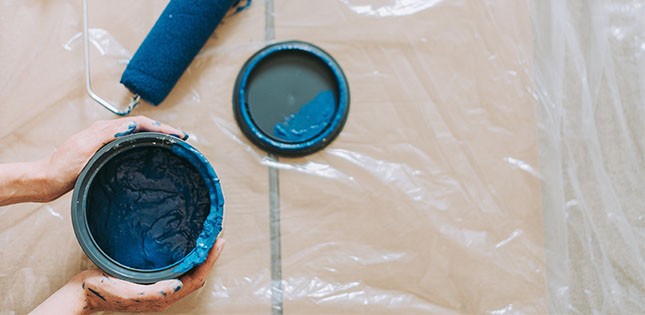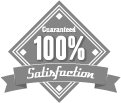
It definitely is worth the research and expense to find paints that don’t contain these VOCs… For the environment’s sake as well as for your health. You should consider the following points while choosing paint:
Avoid hazardous chemicals
The best way to reduce off-gassing from materials indoors is to go for the products that exclude hazardous chemicals. Eliminating hazardous chemicals have many benefits like safer and cleaner environment, healthier home, less hazardous waste to recycling.
Check product claims
Most often the product claiming to be natural refers to one minor ingredient only. Product label might claim that it’s ‘No VOC’, ‘Zero-emission’, ‘Organic’, ‘low odour’, ‘low VOC’ or ‘plant-based’ but when in doubt, check VOC levels with the manufacturer
Is it organic?
Accredited certifying organisations reviews and certifies organic producers and products, but the use of the term ‘organic’ is not enforceable in Australia. The Organic Federation of Australia lists organic certifiers on their website www.ofa.org.au
Is it zero or low emission?
There is no acceptable definition of ‘low VOC’, ‘low odour’ or ‘solvent-free’ but it generally refers to the volatility of the chemicals. The Australian Paint Approval Scheme specifies that ‘low odour’ paint means a maximum of 5 grams per litre of VOCs in the untinted wet paint. (Source: Volatile Organic Compounds (VOC) Limits APAS D181 www.apas.gov.au)
Nowadays almost every paint manufacturer has a low-VOC or zero-VOC product line. Your paint store would have low-VOC paint line in stock. Most low VOC paints are interior paints, but a few exterior paints are also available that are low VOC. Many low-VOC paints are in almost the same price range as the conventional ones.
Read the Product label:
Read the labels carefully, they might not tell you everything but will tell you about the main ingredients. The first and the most simple rule are the lower the VOCs, the paint would be safe and healthier. Generally, low-VOC paint has less than 50 grams per litre. Zero VOC paint has less than 5 grams per litre VOC level before tinting. Although even zero-VOC paints emit a small amount of VOC it is very low in comparison to conventional paints. Look for the GECA certified paint, Good Environmental Choice Australia (GECA) is a third-party certification system that currently has certified at least eight paint products which are listed on its website. Following symbols on the paint will help you make your decision.
Paint has Zero Volatile Organic Compound (VOC) outgassing.
GECA approved environmental choice product.
The Carbon Reduction Institute has certified the paint as carbon neutral – a first in the industry
Chose flat over glossy
The flatter the gloss of the paint, the lower the VOC is. Also, the lighter colours require less tinting hence lower the VOC. One should choose lighter over the darker shades. In fact, many brands are referring to their White untinted paint when they claim to have low or zero VOC paint.
Don’t let quality concerns of VOC paints change your decision
There is no difference between zero-VOC paints and conventional paints. Both paints provide the same coverage. Low or zero-VOCs paints can be applied in exactly the same manner as conventional paints. So do not let your decision to use low VOC paint gets deterred by this concern.
A few tips that help to minimise the environmental impacts and save your money
- Buy only enough paint to cover the space, calculate the area that needs to be covered first. The best way to avoid problems in disposing of is to use all the paint which you have bought.
- Don’t throw the leftover paint; give it to someone who can use it.
- Oil-based paints would require additional solvents in the cleaning process.
- All the containers should be closed to after use to avoid the emission of volatile contents into the air.
- Choosing a light coloured paint would reduce the lighting costs.
- There is no need to vacate the site…you can access the site that is still underpainting process if you are using low VOC paints which is not the case if you are using conventional paints.
- While painting, we should not forget to defend the floors…wet paint might tint the floors and carpets. A very common and inexpensive way is utilising outdated newspapers on the surfaces. Even a clear plastic sheet could defend your floor from the paint. This will help avoid spending dollars on fixing scratched or damaged items.
- Protect all the door and window hinges, pulls, and other types of equipment with petroleum jelly ahead of painting job. This simple method will ensure that they do not get coated in paint. Once your painting job is finished, all you have to do is just use a cotton cloth to wipe off the petroleum jelly from the surfaces of the hardware.
- Never pour the paint down the drain… it can contaminate water and soil. If the paint cannot be reused, leave it in the can to dry before disposing of.
Painting Reminders
Regardless of which paint product you might use but it’s always useful to keep the windows open while painting job is being done. Well-ventilated spaces also speed up the drying process. However, you might keep the doors to other rooms closed to avoid fumes entering other parts of the home. After the painting is over, you should also allow a few days to air out before again occupying it to avoid VOCs.
Do not dump leftover paint or wastewater from cleaning tools into the drains which will flow directly to natural water bodies, they should be treated properly before being disposed of. You might dump the wastewater into your toilet… the sewer drain is further treated before being released into the water.






